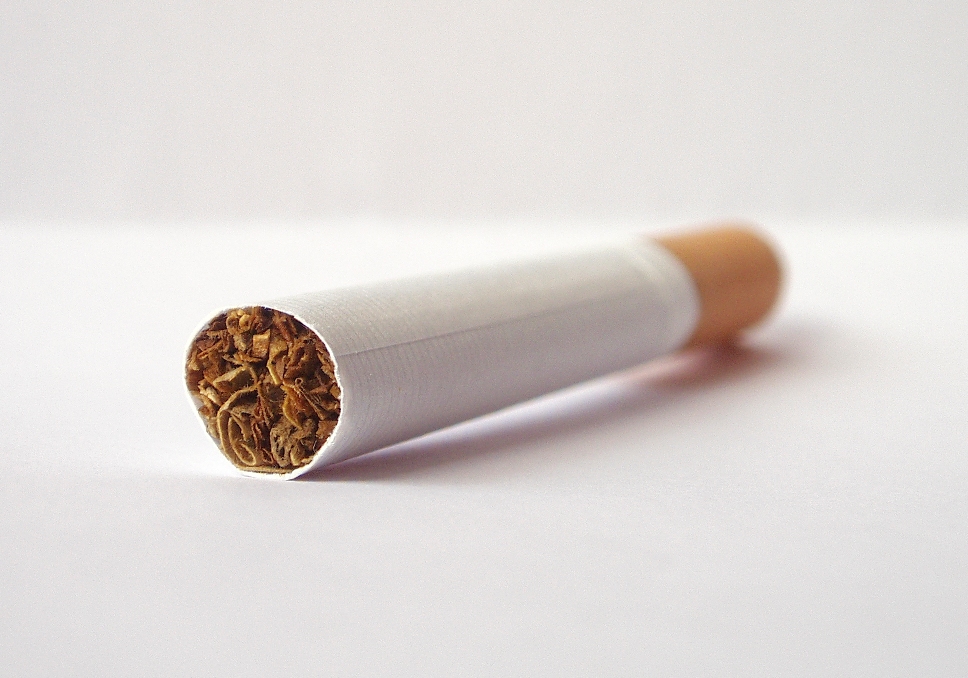
The national exchequer suffered a loss of Rs80 billion between 2007 and 2011 in the shape of lower tax revenues due to an influx of contraband cigarettes in the country, claims a recently-released report that examines the tobacco industry. These losses are expected to grow by another Rs100 billion in the next five years if concrete measures are not taken by government departments.
The report, released by Euromonitor, assessed the illicit cigarette trade in the Asia Pacific region. It reveals that Pakistan stands number three in terms of the trade of contraband cigarettes with every one cigarette out of four sold being illicit, behind Malaysia and Hong Kong.
According to the report, trade in contraband cigarettes in Pakistan reached a peak of 23.5 billion sticks in 2011. These local duty-not-paid (DNP), smuggled and counterfeit cigarettes represent 26.7% of Pakistan’s total cigarette consumption in terms of volume.

Pakistan’s huge illicit cigarette trade is fuelled by two key components: high tax incidence and weak enforcement of anti-illicit trade laws. According to the report, taxes make up 68.7% to 81% of the retail price of a cigarette packet, which is considerably high given the low purchasing power of the average Pakistani consumer. This in turn inflates the price differential between legal and illicit cigarettes; creating a natural shift away from legitimate trade, as smokers can easily purchase duty-evaded cheap cigarettes at a fraction of the duty-paid price.
Pakistan’s illicit cigarette trade comprises three main types: namely, local DNP, which is 84.5% of the illicit market with 19.9 billion sticks sold in 2011; smuggled cigarettes, which comprise 12% of the illicit market with 2.8 billion sticks sold; and counterfeit cigarettes, which comprise 3.5% of the illicit market with 0.8 billion sticks sold.
The report says that between 2002 and 2011, the global illicit cigarette trade contracted by 7.3%, whereas in Pakistan, it witnessed a growth of 113.6% in the same period. In fact, the volume of illicit cigarettes sold more than doubled from 11 billion sticks in 2002, to 23.5 billion sticks in 2011. The report said that, in 2010, the national exchequer suffered a loss of Rs17.6 billion in tax revenues: in 2011, this loss reached around Rs18.5 billion (an increase of 5%).
The report guesstimates that this market is expected to continue to grow by 15% over the period between 2011 and 2015 due to a lack of law enforcement by relevant government agencies.
The Pakistani cigarette industry is basically a duopoly dominated by the Pakistan Tobacco Company and Philip Morris Pakistan, although there are many other smaller manufacturers. Pakistan Tobacco Company has a 48.6% share of the market, followed by Philip Morris Pakistan with 32.2%. Others contribute 19.2%. These companies bear a tax burden within the industry of 67.3%, 31.9% and 0.8% respectively.
Pakistan Tobacco Company is the single-largest taxpaying unit in Pakistan. The company pays more taxes than all salaried individuals in the country combined.
The company’s gross turnover for 2012 stood at Rs75.53 billion (12% higher than the previous year), out of which it paid a whopping Rs39 billion in excise duties (Rs35 billion in the previous year) and an additional Rs11 billion in sales taxes (Rs10 billion in the previous year).
Meanwhile, Philip Morris Pakistan paid Rs5.04 billion in sales taxes in 2012, and another Rs16.96 billion in excise duties for the same period.
Published in The Express Tribune, March 16th, 2013.
Like Business on Facebook to stay informed and join in the conversation.
COMMENTS (7)
Comments are moderated and generally will be posted if they are on-topic and not abusive.
For more information, please see our Comments FAQ

1721377568-0/BeFunky-collage-(18)1721377568-0-165x106.webp)




1732617223-0/Untitled-design-(69)1732617223-0-270x192.webp)

1732603037-0/BeFunk_§_]__-(51)1732603037-0.jpg)
1732610150-0/Untitled-design-(3)1732610150-0-270x192.webp)







If you look at the tobbacco industry being dominated by the largest tax contributor, with the highest margins/profits. One of the largest tobbacco stake holders being acquired by Philip Morris being now Nr.2, holding a large command of the tobbacco business, now diversified to toiletries, media. There are various interpretations. Counterfeiting of major international brands, and grey un-official export to European markets. The factories are built in Northern region, immune from all taxes. There is a major change, which no one talks. The advertising on the package of tobacco is now without any colorful advertising, with the exception of the brand, and the logo/insignia. The history of Excise Duty is very important, Billions being evaded, when there was no smuggling, and no counterfeit being made locally. The billions being earned in the past by tax evasion should also be accounted for? When will the local industry no advertising on cigartette pack?
@ haseeb Khan: fully agree with you.FBR is a major failure, the entire top team needs to be changed
Failure of Pakistan Customs. If you sit back an analyse cause of major economic mess in this country is FBR
@need a smoke now The sales tax and income tax are two different things dont mix the two.the tax mentioned above is Income Tax, not sales tax.
it is strange that 26% market of cigrette consumption is met with contraband smuggled sticks and the there is a cry of loss of revenue. Why cry why the government can not take steps to, stop or reduce it considerably the smuggling. Aftar all cigretes are sold openly . Raid the traders/ sellers and send them to jail. . Deterrence will work . It is only the matter of will and nothing else. bur if the government, politicians( protector of illicit trade) and the officials connive to deprive the exchequer it is the media only which can put pressure to end the corrupt practices. Till then bear it.
You sound like the Aitzaz Ahsan of tobacco industry; advocating for the legitimate trade of cancer.
One correction: PMI and PTC are not the biggest tax payers; they merely collect sales tax from end consumers. Smokers pay that tax.